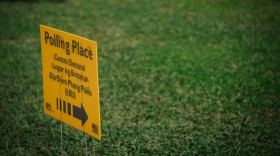Alaska is home to about 18,000 fishermen who harvest nearly 6 billion pounds of seafood each year. Salmon dominates the catch, five species in all: chum salmon, sockeye, king, coho and pink.
For a taste of Alaska fishing life, we head out with a father-daughter fishing team as they go trolling for king salmon in the waters off Sitka, in southeast Alaska.
We're on the Alexa K, a 45-foot steel-hulled troller, with captain Charlie Wilber, 69, and his 27-year-old daughter, Adrienne, "heading out into the briny deep!" as Charlie wryly tells us.
Charlie has been fishing these waters for nearly 40 years. "I never would have imagined I'd end up doin' this," he says. Raised in Omaha, Neb., he came to Alaska fresh out of college. He had a job as a smoke jumper, fighting fires near Fairbanks. But once he went out fishing with a friend, he "got the bug," as he puts it.
He's been fishing ever since.
And it's always been a family adventure. Charlie says he bought the Alexa K because the boat's bulwarks were high enough that his daughters, Adrienne and her younger sister, Berett, couldn't fall off.
Adrienne remembers lots of nights spent sleeping head to toe with Berett in a bunk below deck.
She started fishing with Charlie when she was about 11. It was on the Alexa K, she says, that she learned a lot of the qualities she values most: "Persistence, having a good attitude, and optimism. Living closely with one other person that you're not always getting along with, but still having to work with in a productive way. ... Those are skills I use every day."
Once the Wilbers have filled the coolers with ice to chill the day's catch, and have motored out into Sitka Sound, it's time to fish.
Charlie and Adrienne lower the trolling poles — one on each side of the boat — and get busy hooking artificial lures to the four lines that spool out from the poles: spoons, flashers, an array of shiny and colorful pieces of gear to attract the salmon to bite. It's a smorgasbord of temptation for fussy fish.
"You have to have a variety to offer," Charlie explains. "That's the art of it, trying to figure out what they want to bite. And just about the time you get it figured out, they change! Their appetites are fickle. And then, see, you gotta start all over again."
Father and daughter work in tandem on opposite sides of the stern. They share an instinctive, easy rhythm born of the many years they've spent together on this boat.
Adrienne laughs as she thinks back to her early days learning how to fish: "I remember ... having to go really slow, and getting my gear tangled up, and then Dad would have to come fix it, and 'Ohhhh no, I've messed up!' "
But today, she says, "it feels so good to be out here, just that motion of hauling the gear, and setting the gear."
Which they do, repeatedly, over several hours: reeling the lines in, removing and reattaching the lures, and sending the lines back out.
But on this day, persistence doesn't pay off. The salmon just aren't biting. So we'll take Adrienne's word for it: She describes king salmon as being especially beautiful, with "really dark black mouths, silver sides and white bellies and dark tops. But in that darkness are also these shimmers of gold and shimmers of lavender."
"Gorgeous fish," her father agrees.
It's clear the Wilbers take real pride in the quality — and sustainability — of their wild catch.
In fishing season, the family will enjoy salmon for dinner every other night. "We eat so, so much fish!" Adrienne says. "When we go out and catch it, it's a cheap protein, and it's delicious. You'd think we'd get tired of eating king salmon because we have it so often, but it's just so, so good that to this day, grilled king salmon is still my favorite food. Ever since I was a little kid."
Alaska fishermen operate under a quota system that limits the harvest. But lately, the fishermen of southeast Alaska are contending with alarming trends.
This year, the numbers of wild king salmon returning to rivers to spawn are at an all-time low.
In May, that led the Alaska Department of Fish and Game to temporarily shut down the commercial king salmon trolling season in southeast Alaska one month ahead of schedule.
Charlie says that has never happened in all the years he has been fishing.
Some salmon biologists have concluded that warming ocean temperatures are the main reason behind the decline in fish stocks. And out on the water, Charlie says it's clear: Things are definitely changing.
"The water temperatures are warmer," he notes. "We've seen species of fish that don't ordinarily get up this far. We've seen sunfish; we've seen turtles; we've seen some pomfret."
"And there's been a bunch of squid that have come in, in the last two years," Adrienne adds.
Those new arrivals could be competing with the salmon for food.
"Yeah," Charlie says, "it's really hard to pin it down, to say this is climate change, but things are definitely changing."
The changes are clearly visible around them, too. They just have to look at the rapidly retreating glaciers all over southeast Alaska.
For whatever reason, on the day we go out, the salmon elude us.
Charlie is philosophical about it. "Trolling is kind of a marathon," he says. "You just gotta grind away on it. You have some really good days and some days that aren't so good. But you gotta still stay focused through the bad days, 'cause you never know when they're gonna bite."
On this day, though, the fish win. The Wilbers haul in the lines one last time, lower the poles, and head back to port.
"We were skunked!" Charlie says with a grin.
Adrienne is smiling, too. "Next trip, Dad. Next trip."
The "Our Land" series is produced by Elissa Nadworny.
Copyright 2017 NPR. To see more, visit http://www.npr.org/.






